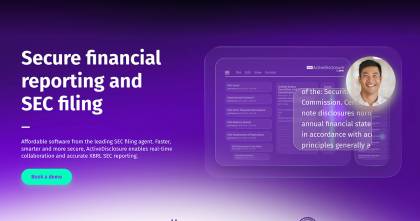Launching an initial public offering (IPO) is a major milestone in a company's life cycle. While an IPO tends to attract media attention, we often don't hear as much about the initial public offering procedure. What is needed when filing for IPO process? How long does it take, and how can companies stay organized throughout?
Keep reading to learn all about the IPO roadmap, how much time each step takes, and what to keep in mind.
Understanding IPO Preparation
A company may want to go public for several reasons, such as raising capital, creating new opportunities, or to provide an exit strategy for early investors. While a company may have a compelling reason to go public, an IPO needs to consider other aspects of readiness, such as:
- Market conditions: Does the market support an IPO right now?
- Corporate governance: Are there outstanding governance issues to address?
- Financials: Do the numbers tell a good story?
This IPO readiness checklist may be a helpful communications tool throughout the process. It outlines key personnel involved in the deal, due diligence before an IPO, and the IPO roadshow. Combined with this timeline, it can help set expectations and streamline communications.
The IPO Timeline
IPOs have a lot of moving parts. This IPO process timeline will help you understand what needs to happen, why and — most importantly — why.
Preparation Phase: 12-18 months
- Internal Assessment: During the IPO, your company's operations, financial health and governance will be getting scrutiny from SEC officials, the media and the public. During this stage, comb through the business finances and corporate governance, asking "Is this ready for public scrutiny?" Then identify any areas that need extra attention
- Prepare work plan for IPO readiness
- Assess financial statements and evaluate audit firm
- Assess internal resources & assemble team (accounting, FP&A, legal, IR)
- Evaluate need for third-party advisers • Consider structural decisions (e.g., corporate, tax, compensation)
Organizational Meetings/Pre-Filing: 4 - 6 months
- Kickoff meeting with all key players establishing internal timeline
- Engage lead underwriters who play a key role in the IPO process by evaluating business finances and helping set the share price.
- Prepare S-1
- Equity story/investment thesis
- Historical financial statements & MD&A
- Risk factors/legal sections
- Financial model
Initial submission and Roadshow Preparation: 3 months
- Confidential submission of S-1/F-1 under Form DRS and SEC review process including filing multiple amendments due to SEC comments, which are delivered over the course of multiple rounds lasting typically 12 to 14 weeks altogether
- Teach-in with syndicate analysis
- Prepare roadshow presentation including slide-deck
- Publicly file S-1/F-1 at least 15 days prior to launch of roadshow
- Finalize IPO documentation
- Organizational and governance documents
- Listing application
- Underwriting agreement
Roadshow: 2 weeks
- Finalize preliminary prospectus with indicative price range.
- Launch roadshow for your IPO (typically 7-10 trading days) /meet potential investors. In a roadshow, the company promotes the IPO to potential investors. Investors have an early buy-in opportunity during the roadshow. This means they can buy shares for a better price than the public, once the information becomes public. Demonstrating a track record of success and assembling a team with proven credentials helps inspire confidence in investors. The feedback you receive during this phase can help you adjust your final pricing and terms.
Pricing/Trading: 1 day
- Price IPO after market close at conclusion of roadshow. Several factors influence the final price, including projected investor interest, roadshow performance and real-time market conditions.
- Begin trading next day after pricing. When the market opens, shares are officially on offer. Investors buy, the stock begins to trade, and the company has officially gone public.
- Close third trading day after pricing
Life Post IPO
- Quiet Period: After the IPO is finished, companies usually have a quiet period. During this time, companies downplay promotional activities, in adherence with SEC regulations. The share price may rise and fall, in accordance with investor demand. There is some wrap-up paperwork that must be completed and filed with the SEC.
- Regulatory Compliance and Reporting
- Extensive quarterly reporting
- SOX compliance
- Annual reports and recent event
- Proxy Statement, Annual Meeting
- Maintaining Investor Relations: Investor relations is a critical element of the post-IPO process. This is how you keep all your investors informed and engaged.
Knowing more about the steps of an IPO will help everyone stay on track as the company moves toward an IPO. If everyone on the team does their part within the right time frame, the launch should be a success.
While checklists and guides will help a company stay organized during the IPO, don't overlook the importance of a secure, encrypted financial reporting tool for filing with the SEC. DFIN's industry-leading IPO software makes SEC filing efficient, so your company can focus on more pressing matters.
